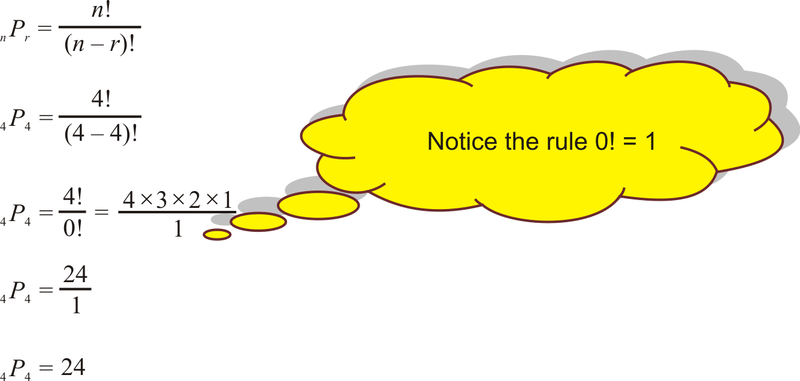Permutations and Combinations are the next step in the learning of probability. It is by using permutation
and combinations that we can find the probabilities of various events
occurring at the same time, such as choosing 3 boys and 3 girls from a
class of grade 12 math students.
In mathematics, we use more precise language:
If the order doesn't matter, it is a combination.
If the order does matter, it is a permutation.
Example 1:
What is
the total number of possible 4-letter arrangements of the letters 's',
'n', 'o', and 'w' if each letter is used only once in each arrangement?
In this problem, there are 4 letters to choose from, so n=4 . We want 4-letter arrangements; therefore, we are choosing 4 objects at a time. In this example, r=4 .

Example 2:
A
committee is to be formed with a president, a vice president, and a
treasurer. If there are 10 people to select from, how many committees
are possible?
In this problem, there are 10 committee members to choose from, so n=10 .
We want to choose 3 members to be president, vice-president, and
treasurer; therefore, we are choosing 3 objects at a time. In this
example, r=3 .
Example 3:
Here’s a few examples of combinations (order doesn’t matter) from permutations (order matters).
- Combination: Picking a team of 3 people from a group of 10. C(10,3) = 10!/(7! · 3!) = 10 · 9 · 8 / (3 · 2 · 1) = 120.
Permutation: Picking a President, VP and Waterboy from a group of 10. P(10,3) = 10!/7! = 10 · 9 · 8 = 720.
- Combination: Choosing 3 desserts from a menu of 10. C(10,3) = 120.
Permutation: Listing your 3 favorite desserts, in order, from a menu of 10. P(10,3) = 720.
Video:

WOOOW! thanks, great work
ReplyDeletenow i understand with the rule in this topic. Thanks afiqah and good job.
ReplyDeletethanks for sharing this. I learned something from here. Good work!
ReplyDelete